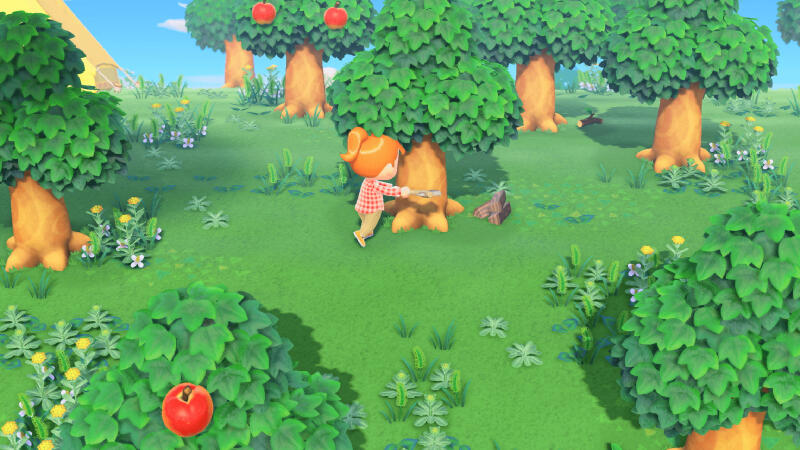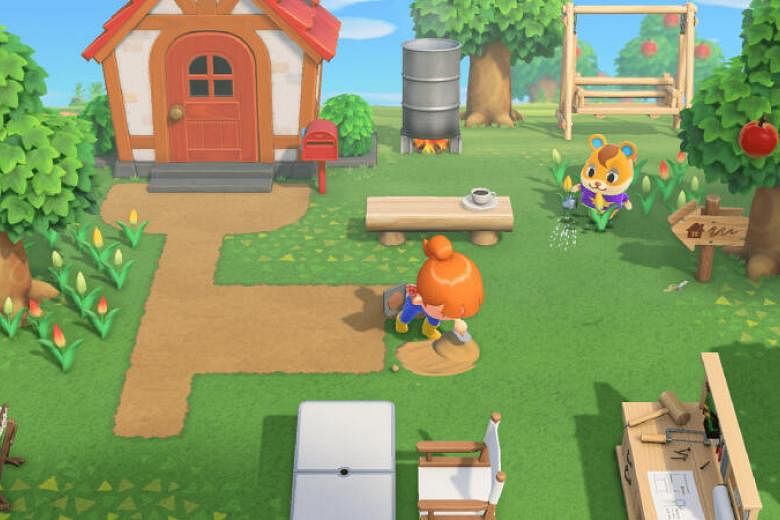I was never into the Animal Crossing video game franchise, as I have not owned a Nintendo gaming console before I bought the Switch.
So when Animal Crossing: New Horizons (ACNH) was released on March 20, I did not feel compelled to buy it.
But then, I started seeing friends who are playing it post the virtual fishes they have caught and the cutesy houses they have built. Intrigued, I bought the game a month ago and now I wonder why it had taken me so long to do so.
ACNH is the latest iteration of Animal Crossing, a 19-year-old popular life-simulation video game series. The series' premise is a simple one: Players usually live in a village or island inhabited by animal residents and do daily activities like catching bugs, fishing, planting flowers and digging for fossils.
With ACNH, you start by creating your character and join the game's racoon tycoon Tom Nook in a new island, where you can start your new life. (Don't we all now love to start afresh on an island?)
You get to name the island. But once you have named it, you cannot change it. The same applies for your character's name.
You will also be asked if you want to be in the Northern or Southern Hemisphere. Since Singapore is above the equator, I chose Northern Hemisphere. This choice will affect the seasonal changes in the game, as it follows a real clock.
Once you are settled in on the island, you will need to finish some tasks daily to get Nook Miles. Accumulating Nook Miles lets you redeem Nook Miles Tickets (which allows you to visit mystery islands), as well as redeem in-game items such as DIY recipes (needed for crafting specific items such as a wired fence) and even a monster statue.
Most tasks involve unearthing fossils, catching bugs and fishing for new species of fishes to fill up the island's museum. You will also be chopping down trees for wood to craft things, hitting on stones to get iron nuggets or clay, and planting flowers and trees to beautify your island.

You can sell surplus fishes, fossils and other items to earn Bells, the in-game currency. You will need plenty of Bells to pay for your own house and its subsequent expansion.
This is just the basic gameplay. If you do not do anything else, the game might seem boring after a while. On the flipside though, you dictate how fast you want to play.
But there is more. At the start of the game, you have two animal residents joining you on the island. Your aim is to attract more of them by beautifying your island, so as to turn it into a bustling hub.
These animal residents, which are each unique and have their own personalities, will leave your island if things get too boring. They speak a type of high-pitch but cute gibberish, which you can decipher by reading the subtitles.
There is no majestic orchestral soundtrack, but the sound effects are all on point. The graphics won't win any technical excellence awards, but they are good enough in a cutesy way.
As you progress later in the game, you will gain the ability to terraform your island. You can add pathways, build cliffs and carve out rivers.
You can also buy bridges and inclines using Bells, to connect different parts of the island so your residents can walk around easily.
However, it is the custom designs that bring a whole new dimension to the game. Once you are able to get a tailor shop on your island, you can browse the custom designs that other players have posted.
To do so, you need to go to the Internet to get the designer's ID, which you then input in the Internet terminal inside the tailor shop to access the custom designs.
With these designs, you can customise items and even roads. I decorated a stall with a Ya Kun design to re-create the iconic coffee stall on my island.
The other key differentiator of this game is its social interaction feature. You can chat with another player via voice or text when visiting his or her island.
However, in order to do so, you have to subscribe to the Nintendo Switch Online service, which costs US$3.99 ($5.98) per month.
But I think the price is well worth it. This is because not only can you interact with other players, you can exchange rare items among each other and play "Stalk Exchange", or turnip trading.
Every Sunday morning, a character called Daisy Mae will come to your island to sell turnips. Buy lots of them and wait for the prices to go up so you can sell them to your island's store for a profit. You can go to Turnip Exchange - an unofficial website to see whose island's store has a good price so you can go there to sell your turnips for huge profit.
My only quibble about the game is the controls. There are times when I want to plant the trees in a straight line and the controls just do not allow that kind of precision. Plus, you can tilt but not rotate the camera angle.
But that doesn't take away from the fun I am having with this game. One month into it and I am barely scratching its surface. So excuse me while I get back to my island - there is much to do and I need to find some star fragments.
FOR
- Cutesy and interactive in-game characters
- You dictate the pace
- Plenty of customisations
- The "Stalk Exchange" gameplay feature
AGAINST
- Iffy controls
- Requires Nintendo Switch Online subscription to visit other players
TECH SPECS
PRICE: $79.90 (Nintendo Switch only)
GENRE: Life simulation
RATING: 9/10 [ST TECH EDITOR'S CHOICE]


